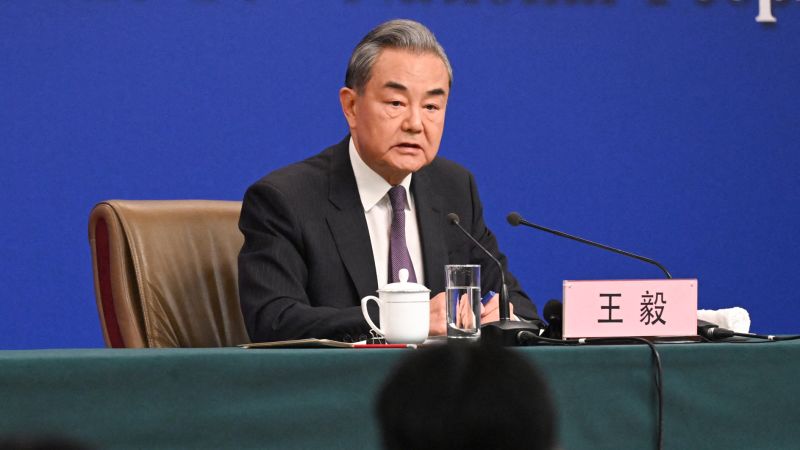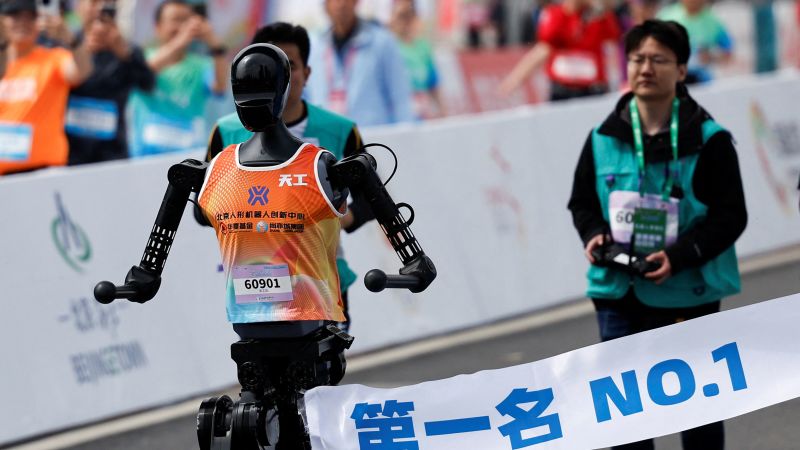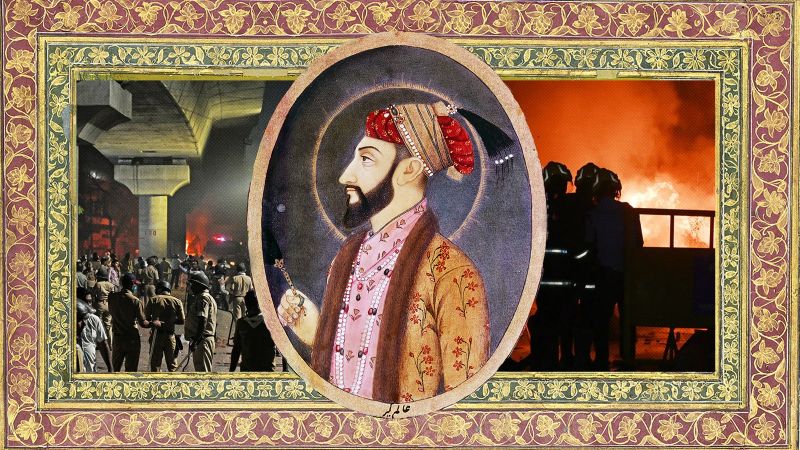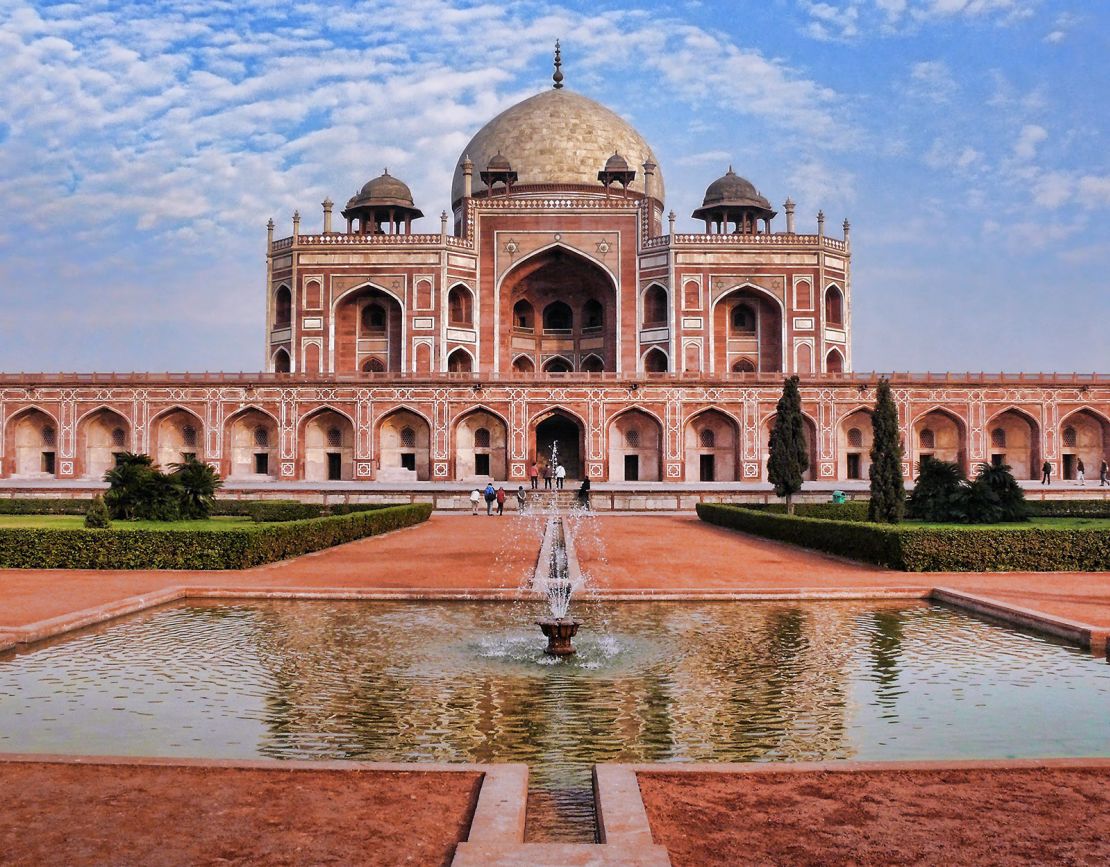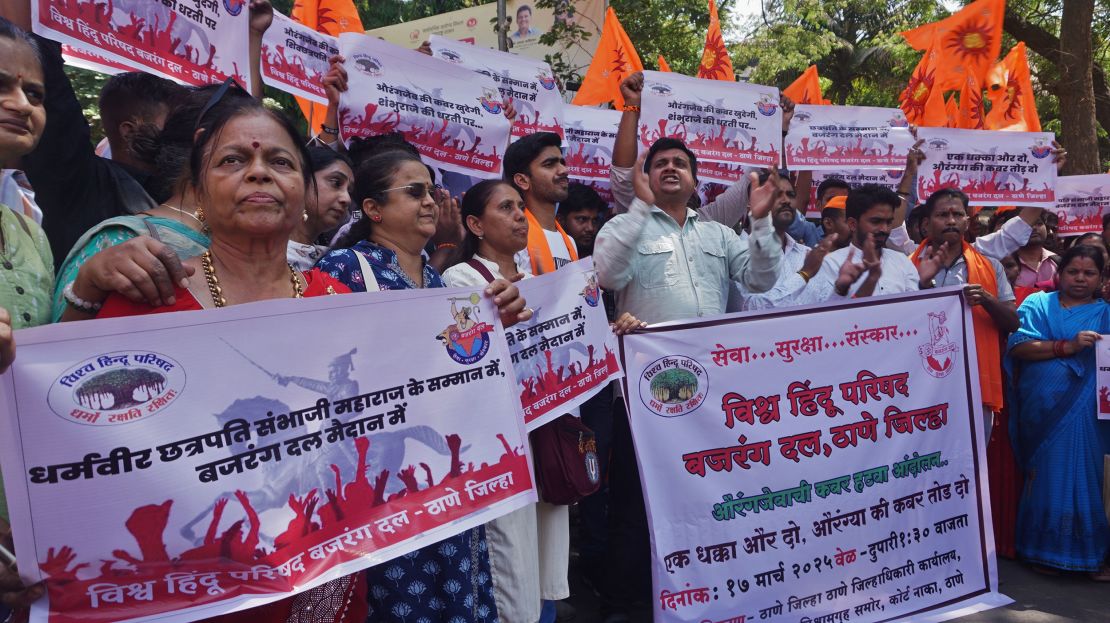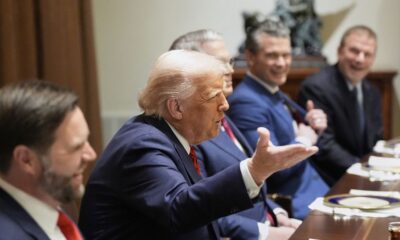Beijing
CNN
—
If every country were to put itself first, the ‘law of the jungle’ would return, China’s Foreign Minister Wang Yi said on Friday in response to a question from CNN’s Steven Jiang about US President Donald Trump’s “America First” policy.
“There are more than 190 countries in the world,” the Chinese diplomat said during a news conference in Beijing.
“Should everyone stress ‘my country first’ and obsess over a position of strength, the law of the jungle would reign again, smaller and weaker countries would bear the brunt first, and international norms and order would take a body blow,” he added.
Wang, China’s most seasoned diplomat and a trusted hand for Chinese leader Xi Jinping, made the remarks while hosting his 11th such news briefing on the sidelines of the yearly “two sessions” gathering of China’s rubber stamp legislature and its top political advisory body.
The highly choregraphed event is typically a chance for Beijing to broadcast its views on pressing global issues. But this year’s gathering, which comes as Beijing is wading into a new trade war with Washington and Trump upends US foreign policy, gave Wang a well-timed platform to present China as a reliable leader and stable partner.
When asked about Trump’s decision to double additional tariffs on Chinese imports to the US earlier this week, Wang struck a defiant tone: “No country should fantasize that it can suppress China on the one hand and develop good relations with China on the other.”
“This ‘two-faced’ approach is not only not conducive to the stability of bilateral relations, but also unable to establish mutual trust,” he added.
“A big country should honor its international obligations and fulfill its due responsibilities. It should not put selfish interests before principles, still less should it wield the power to bully the weak,” Wang said, adding that China “resolutely opposes power politics and hegemony.”
Since taking office in January, Trump has upended the US role on the global stage: pulling back from international pacts and bodies, cancelling much of America’s vast foreign aid and threatening to take control of other countries’ sovereign territory. His administration has also thrown into question longstanding alliances, alienating Europe as it pivots to Russia — and earlier this week suspending American military aid to Ukraine.
Frequent criticisms of China’s aggression in South China Sea and its intimidation of the self-ruling democracy of Taiwan notwithstanding, Chinese diplomats have used the American president’s shakeup to inject more oomph into efforts to showcase their country — and not America — as being on the right side of history.
Few global issues have lent themselves as neatly to that rhetoric than the war in Ukraine.
Washington’s pivot toward Moscow has not only shocked European allies but left open an opportunity for Beijing to push back against longstanding criticism of its close ties with Moscow, which have only expanded since Putin’s invasion of Ukraine.
Speaking to media Wednesday on the margins of a meeting of China’s advisory body the Chinese People’s Political Consultative Conference, Lu Shaye, China’s special envoy for the European Affairs, called on countries to “first criticize the US” and not China for Russia ties.
“Is it still necessary to question whether China is favoring Russia? If they still have doubts about this, they should first criticize the US. The US is not just leaning (towards Russia) — it’s supporting it,” said Lu, a former ambassador to France who’s known for his brash style.
“European friends should reflect on how the Trump administration’s policies contrast with those of the Chinese government,” he said, adding that with its “mutually beneficial” approach to foreign policy, China’s “circle of friends will only grow.”
The Chinese foreign minister also addressed the war in Ukraine and Russia-China relations during his roughly 90-minute press conference.
He hailed Moscow-Beijing ties as a “constant push in a turbulent world” at a time when Trump officials have suggested they hope to drive a wedge between the two close partners.
When asked how Beijing could factor into efforts toward peace in Ukraine, which so far have appeared to be largely driven by Washington and Moscow and bypassing Europe and Ukraine, Wang reiterated China’s claim that it holds an “objective and impartial” stance on the conflict and said it “welcomes and supports all efforts for peace.”
But he also used his answer to promote a shared view between Moscow and Beijing — who have long been united in their opposition to NATO, which they have falsely blamed for sparking Russia’s invasion. `
“All parties should learn something from the crisis,” Wang said, adding in a veiled reference to the US and its Europe alliance system: “No country should build its security on the insecurity of another.”
He also indirectly criticized Washington’s approach to the conflict in Gaza, when asked about Trump’s controversial proposal last month for the US to take ownership of the war-torn enclave and redevelop it into a “Middle Eastern Riviera.”
“If the major country truly cares about the people in Gaza, it should promote comprehensive and lasting ceasefire, ramp up humanitarian assistance, observe the principle of Palestinians governing Palestine and contribute to the reconstruction,” he said.

